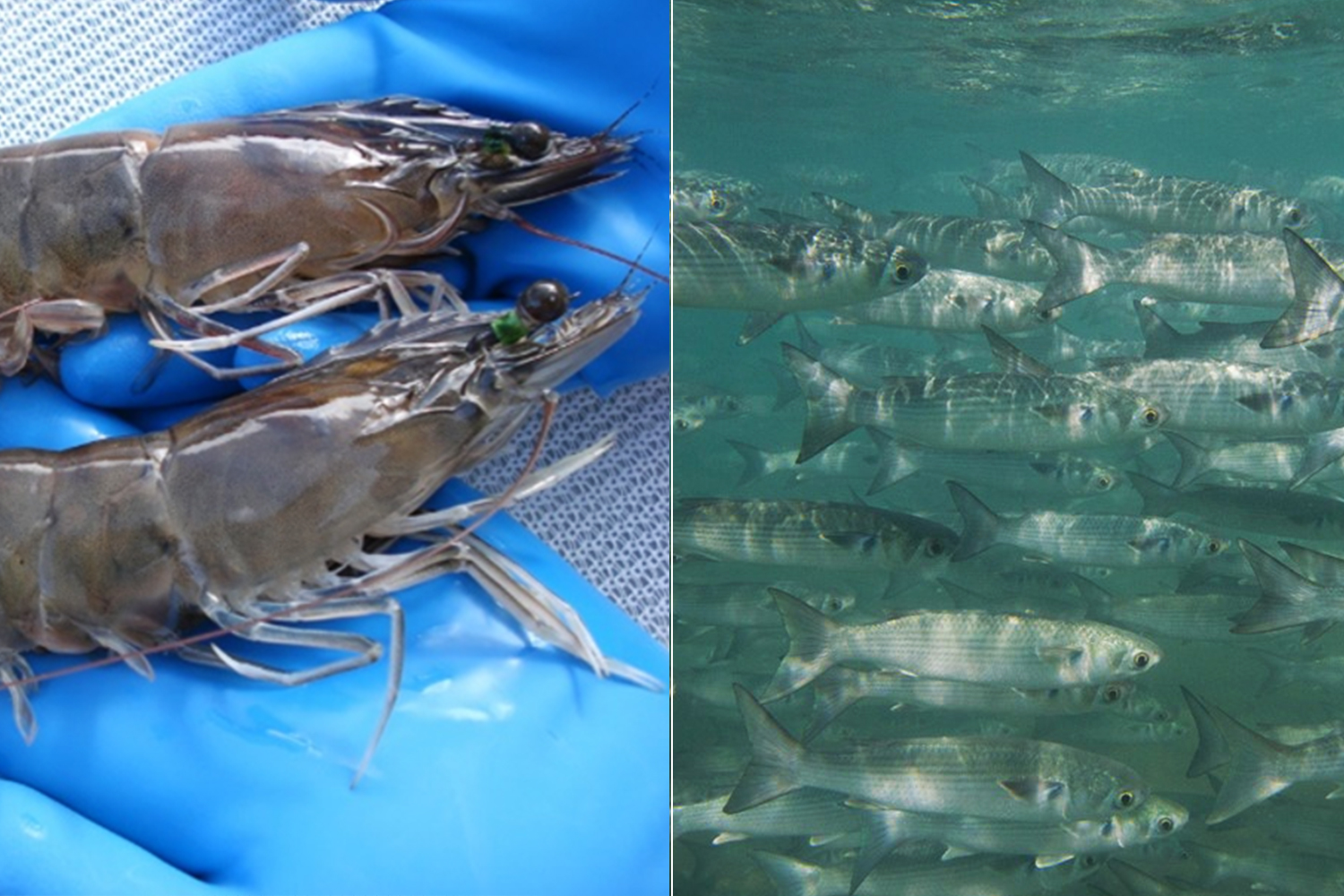If you’ve ever had a pet fish, you know that regularly changing the fish’s water can make the difference between your finned friend flourishing—versus floating.
Aquaculture requires clean water to grow healthy seafood, too. There needs to be a plan in place for excess nutrients from uneaten food and fish waste, also called effluent, to keep the farm healthy and the environment safe.
A NOAA Fisheries-supported project is seeking to give aquaculture effluent a new purpose. It is testing how well three species of native limu (seaweed) filter and grow in effluent from modern aquaculture systems. If successful, aqua farms could grow the limu to more easily filter and reuse water. The project is also investigating how limu grows in loko iʻa (Hawaiian fishponds), ancient aquaculture systems that do not use specialized feed for their farmed species.
Limu are culturally important in Hawaiʻi but disappearing from nearshore reefs. The work will hopefully provide traditional and modern aquaculture operations with information on how they can best grow native limu.
“We’re not only using a biological filter [limu] to remove dissolved nutrients from effluent,” said Shaun Moss, Executive Director of the Hawaiʻi Pacific University’s Oceanic Institute. “We're also producing a potential secondary cash crop and a limu supply for cultural purposes and limu restoration efforts.”
Multi-Trophic Aquaculture
For their work, Moss and his colleagues at Oceanic Institute developed an “integrated multi-trophic aquaculture system,” which uses byproducts from one species to grow another.
The experimental design uses three sources of effluent. Oceanic Institute grew Pacific white shrimp in one tank and the carnivorous marine fish pāpio (juvenile giant trevally) in another. Both species were raised on commercial diets for shrimp and fish, respectively. The third effluent source came from an ʻamaʻama (Hawaiian striped mullet) pond that closely mimics the conditions of loko iʻa. In a previous NOAA Fisheries-supported project, Oceanic Institute grew ʻamaʻama in its hatchery and delivered the fish to several loko iʻa for growth trials.
Each of these sources supplied effluent to multiple 55-gallon tanks containing Gracilaria, Grateloupia, or Ulva limu. These limu species were chosen and provided by Wally Ito, a recognized limu expert who has been growing limu at the State of Hawaiʻi Ānuenue Fisheries Research Center since 2005. Ito was drawn to the project because of its work with loko iʻa and pairing limu with ʻamaʻama.
“It’s an integration of Hawaiian cultural knowledge with modern science techniques,” Ito said. “And modern science respecting the work of fishponds and their work in learning more about fish and limu.” Moss agreed: “There may be secrets and intuitions in Indigenous knowledge that Western science is not attuned to.”
Oceanic Institute monitored limu growth, as well as the water temperature and pH levels of the limu tanks. They also measured the amount of dissolved nutrients—ammonia nitrogen, nitrate, and phosphate—that entered and exited the limu systems. This will allow them to gauge how well the limu filtered the water and how that correlates with limu growth.
The project also partnered with Paepae O He‘eia, a community organization dedicated to revitalizing He‘eia loko iʻa, to test limu growth in an existing fishpond.
The multi-trophic system allowed the scientists to ask a wide range of questions:
- In which effluent does Gracilaria limu grow best?
- Which limu grows best in shrimp effluent?
- Which limu filters the dissolved nutrients best?
- How does the growth of limu in a loko iʻa compare with limu grown in the effluent from the ʻamaʻama pond?
Moss and his team are assessing the data and hope to have answers by early 2024.
Why Grow Limu?
Environmental Benefits
Limu has many environmental benefits:
- Preventing coastal erosion
- Providing food and shelter for marine animals
- Storing global carbon
- Producing oxygen
Cultural Benefits
While seaweed is used throughout the U.S. Pacific Islands, “Hawaiʻi is unique when it comes to limu,” Moss said.
The tasty seaweed plays a significant role in Hawaiian culture. Hundreds of years ago limu was a huge part of the traditional Hawaiian diet; today it’s still used for food and many medicinal and cultural purposes.
Community Benefits
Native limu in the nearshore reefs around the islands are disappearing as invasive seaweeds take over. To raise awareness of the value and plight of limu and garner more support for restoration efforts, Hawaiʻi celebrated 2022 as the “Year of the Limu.” To help these efforts, Oceanic Institute donated some of their cultured limu to the community organization Waimanalo Limu Hui for cultural use and outplanting into Waimanalo Bay.
While the project is particularly relevant to Hawaiʻi, it could help aquaculture communities all over the world, Moss noted.
“We’re asking broader questions about how seaweed, in general, serves as a biofilter to mitigate water pollution,” Moss said. “That question could be asked anywhere. Our data might even be valuable for aquaculture in temperate climates because seaweed grows everywhere.”
This project was funded through the 2022 Saltonstall-Kennedy National Program, a yearly grant competition that funds projects leading to the promotion, development, and marketing of U.S. fisheries.






